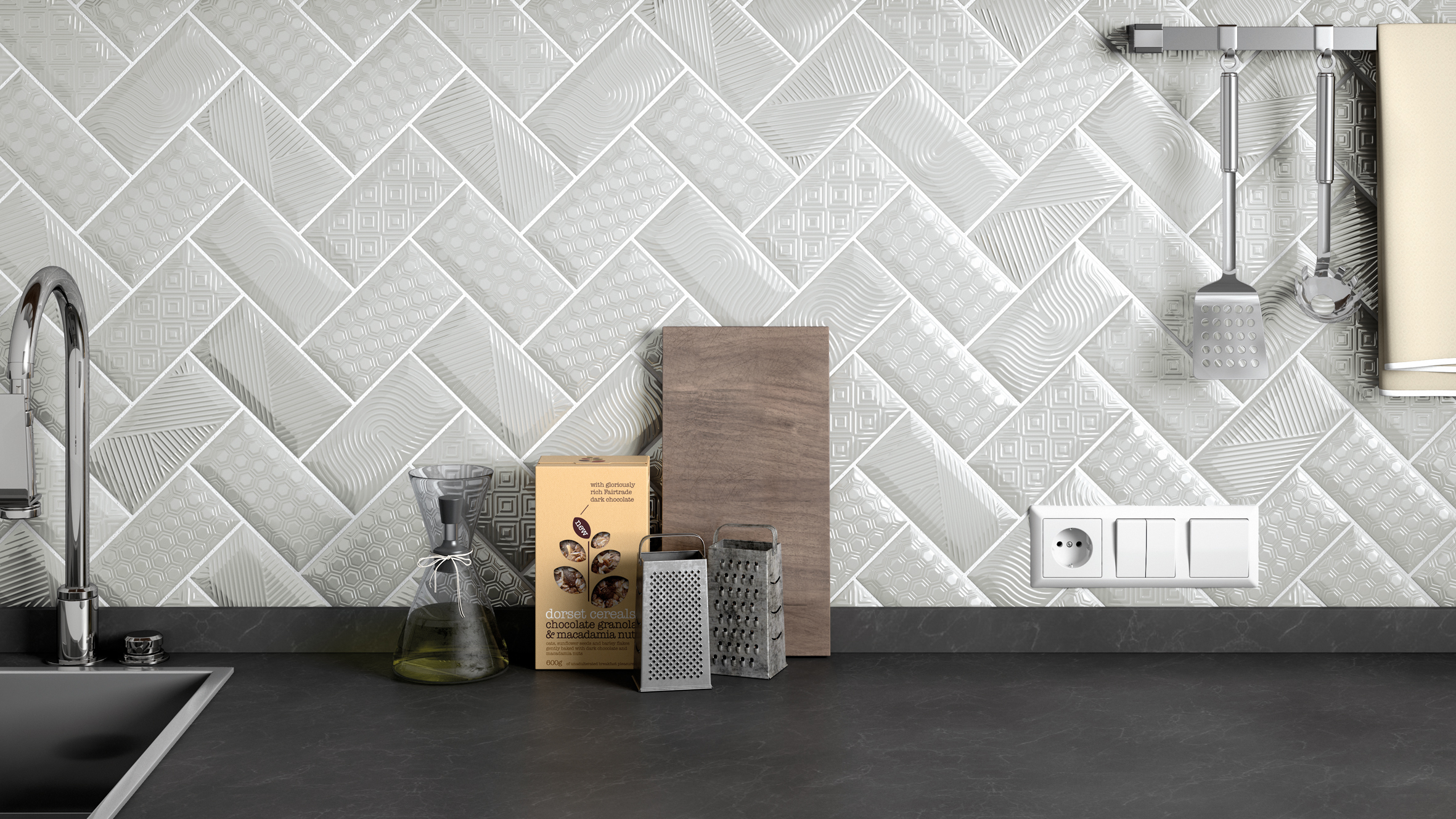

They may be a practical choice when you’re revamping a kitchen or redesigning a bathroom, but wall tiles are also a fabulous feature for these rooms, whether you opt for understated versions or real attention-grabbers. Select from ceramic tiles, which offer an enormous choice of designs, or other manmade tiles, like porcelain, or enjoy the beauty of natural materials, such as marble.
Think as well about tile shape and size, which will make a major contribution to the final look of your room. Bamboozled by the possibilities? Our guide will lead you to the right decision.
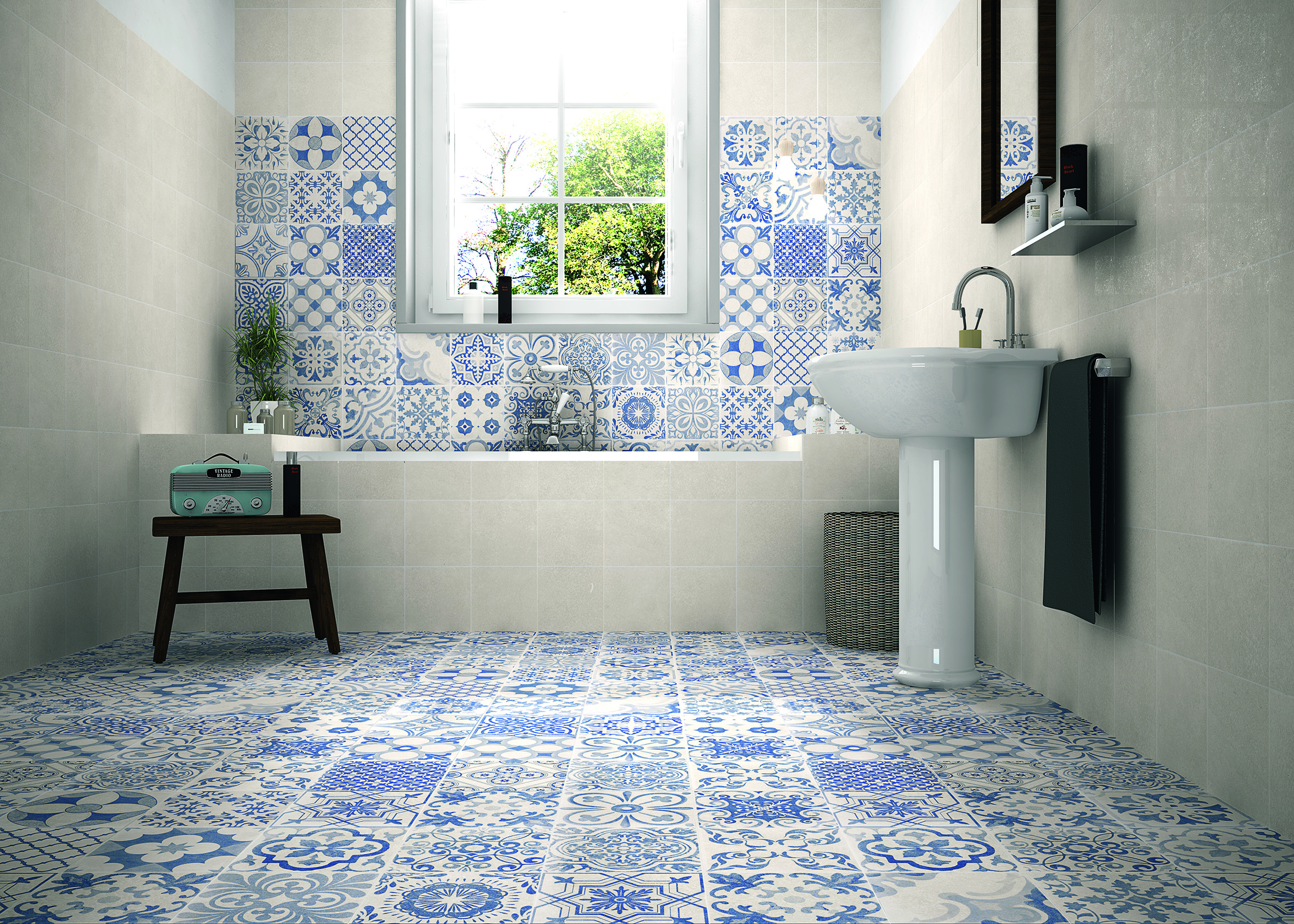
Skyros porcelain tiles, £19.99 per square metre, Tile Mountain
Which tiles are suitable for walls?
Plainly, tiles labelled as wall tiles are appropriate for walls. However, floor tiles may be suitable for walls, too. The benefit of considering these, too? Your choice of tiles is wider and includes larger format tiles, plus it means you can match floor and wall tiles to create a continuous surface and a contemporary aesthetic. There is a caveat, though. Heavy, large format tiles may be a load too far for some types of walls. If you’re not sure, call on a builder for advice.
Top tip: Remember that tile swapping doesn’t work in reverse. A tile labelled as being suitable for walls with the Porcelain Enamel Institute’s abrasion resistance PEI rating of 0 should not be used on the floor.
Which wall tile material?
If you prefer to use natural materials when you can, you’ll find stone wall tiles to complete a kitchen or bathroom scheme. However, it’s manmade tiles, especially ceramic, that offer the widest design possibilities.
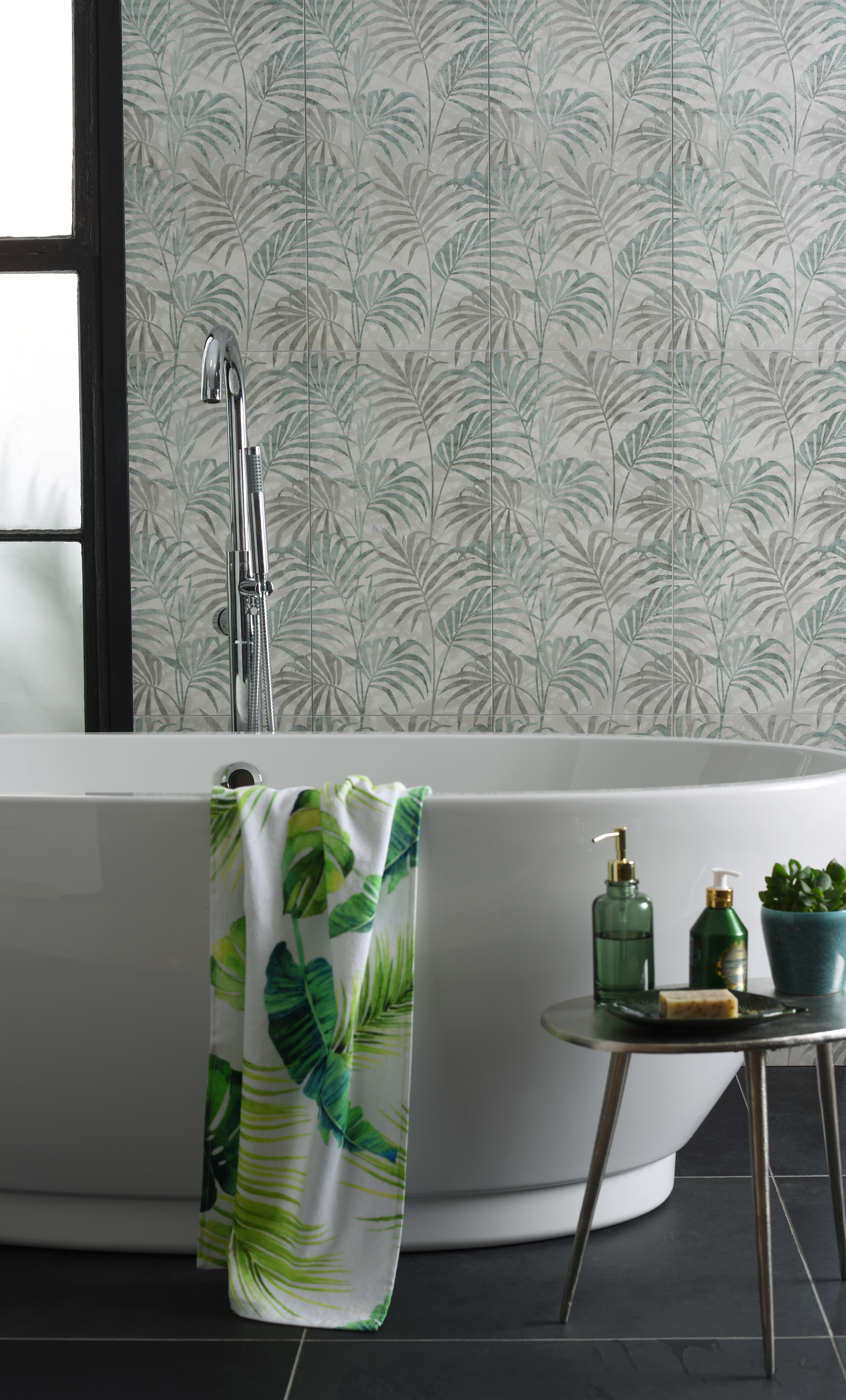
Eden Hothouse ceramic tiles, £79.95 per square metre, Living range, Original Style
Manmade wall tiles
Manmade wall tiles can provide a budget-friendly way to dress kitchen and bathroom walls. Pick from ceramic and porcelain designs, and consider mosaics, too. Porcelain is denser than ceramic, but because we’re talking wall tiles here rather than floor tiles, either will create an effective and beautiful wall covering and be easy to care for.
Ceramic tiles come in a huge range of sizes – from the typical small wall tile size upwards – and colours, with patterns as well as plain, and can be glossy, matt or have other finishes.
Porcelain tiles also offer different formats, colours, patterns, and a variety of finishes.
Both ceramic and porcelain can replicate the look of stone tiles, like marble, or even have the appearance of wood.
Glass tiles look contemporary and complement the other reflective surfaces in a kitchen or bathroom. They’re frequently featured in mosaics, but larger tile formats are available.
Quartz and resin tiles can be made with tiny mirror pieces that catch the light, and can be repeated for the floor if you like the continuous look.
Mosaic tiles can add intricate detail as a kitchen or bathroom splashback, or to zone an area of the bathroom. Don’t just think classic small squares, mosaics can be hexagonal, kite shaped, rectangular, herringbone and more.
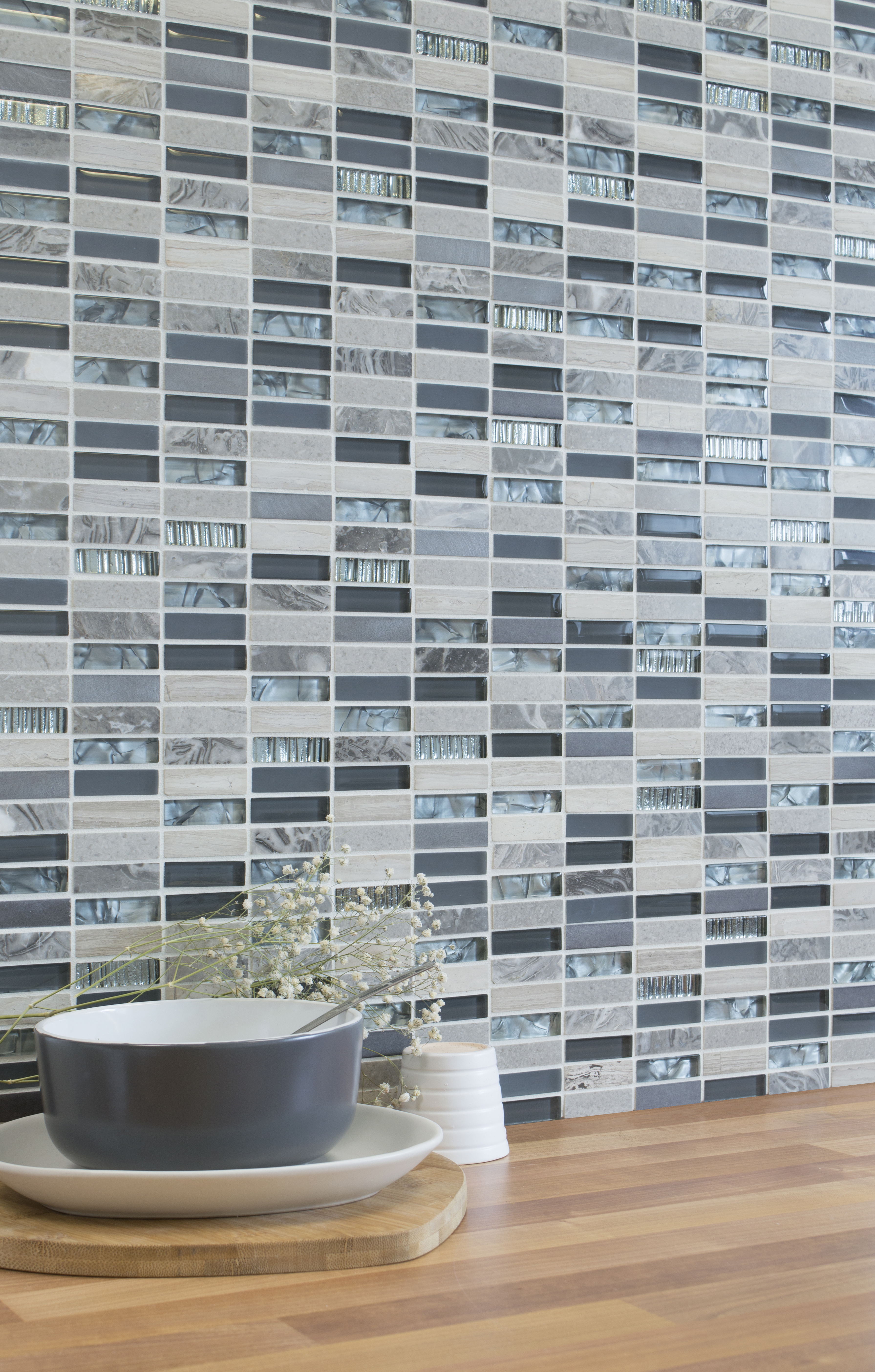
Aurora Mix mosaic tiles, £14.95 per sheet, Walls and Floors
Natural stone tiles
Authentic stone tiles are tactile and each has unique detail, which will be reflected in the cost. They will need to be sealed to protect them because stone is porous. Take a look at these natural beauties:
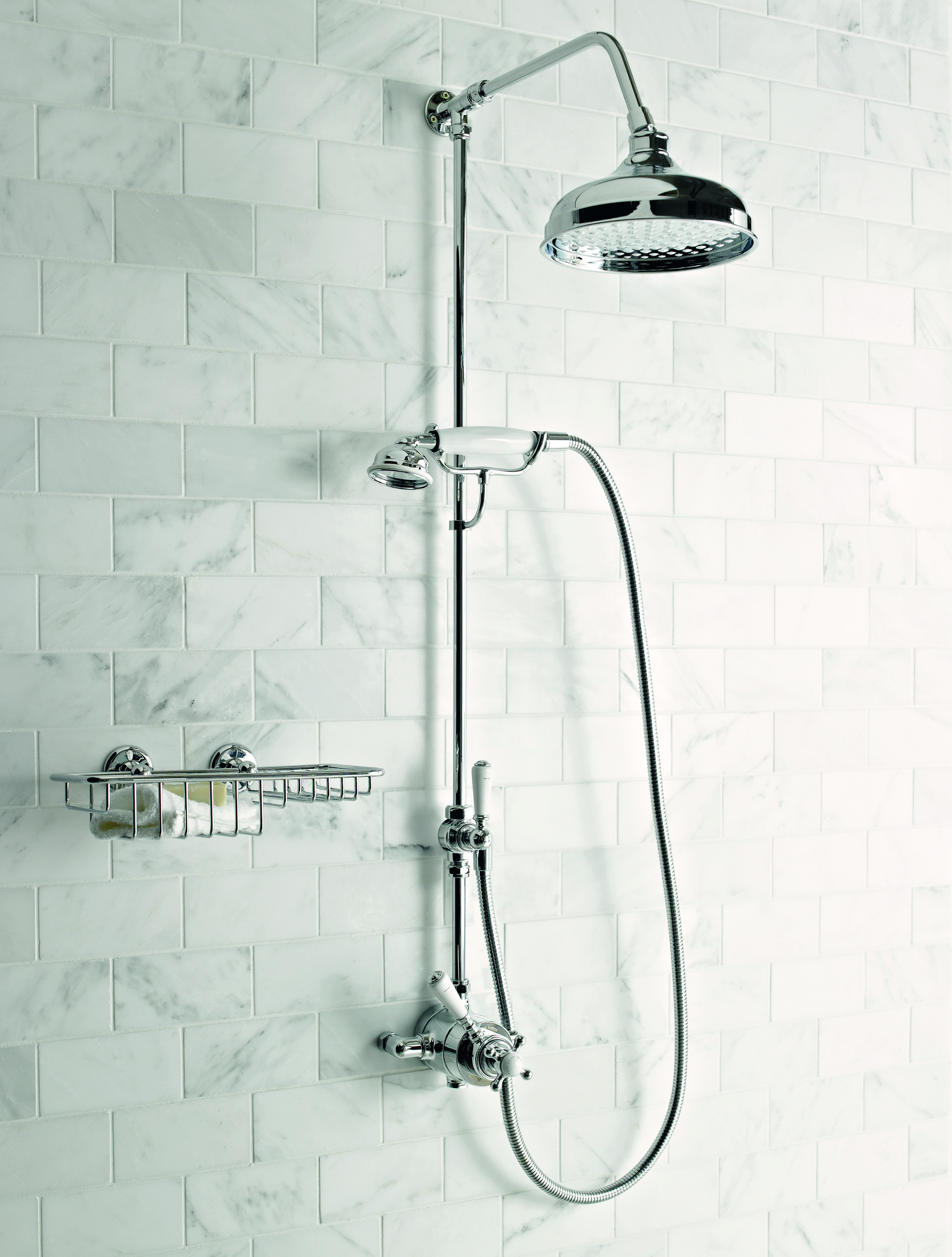
East Hampton diamond sawn honed marble tiles, £114.82 per square metre, Fired Earth
Marble can create a luxurious finish for walls, and some marbles have extremely striking vein patterns. Try a tumbled finish for a beautifully aged look, the modern satin sheen of a honed tile, or a brilliant polished finish. Although marble’s long been a favourite for five-star hotel style bathrooms, it can make a fabulous feature as a kitchen splashback.
Limestone tiles will bring pleasing neutral tones including creams, beiges and greys to walls and, as with marble, you can strike a different note depending on the finish. Match to floor tiles if you like the idea of a luxurious bathroom look.
Travertine is available in warm rust and walnut shades as well as cream, beige and grey neutrals. As with limestone, in the bathroom, it looks effective used on the walls and floor, as well as on walls alone.
Slate makes an impact with its rich dark tones of colour. As well as the usual tile formats, check out split-face mosaic slate tiles, which have an irregular textural finish that can add another dimension to kitchen or bathroom design.
Quartzite is often used in mosaics and split-face tiles. Beige or grey tones and natural sparkle make it subtly eye-catching on walls.
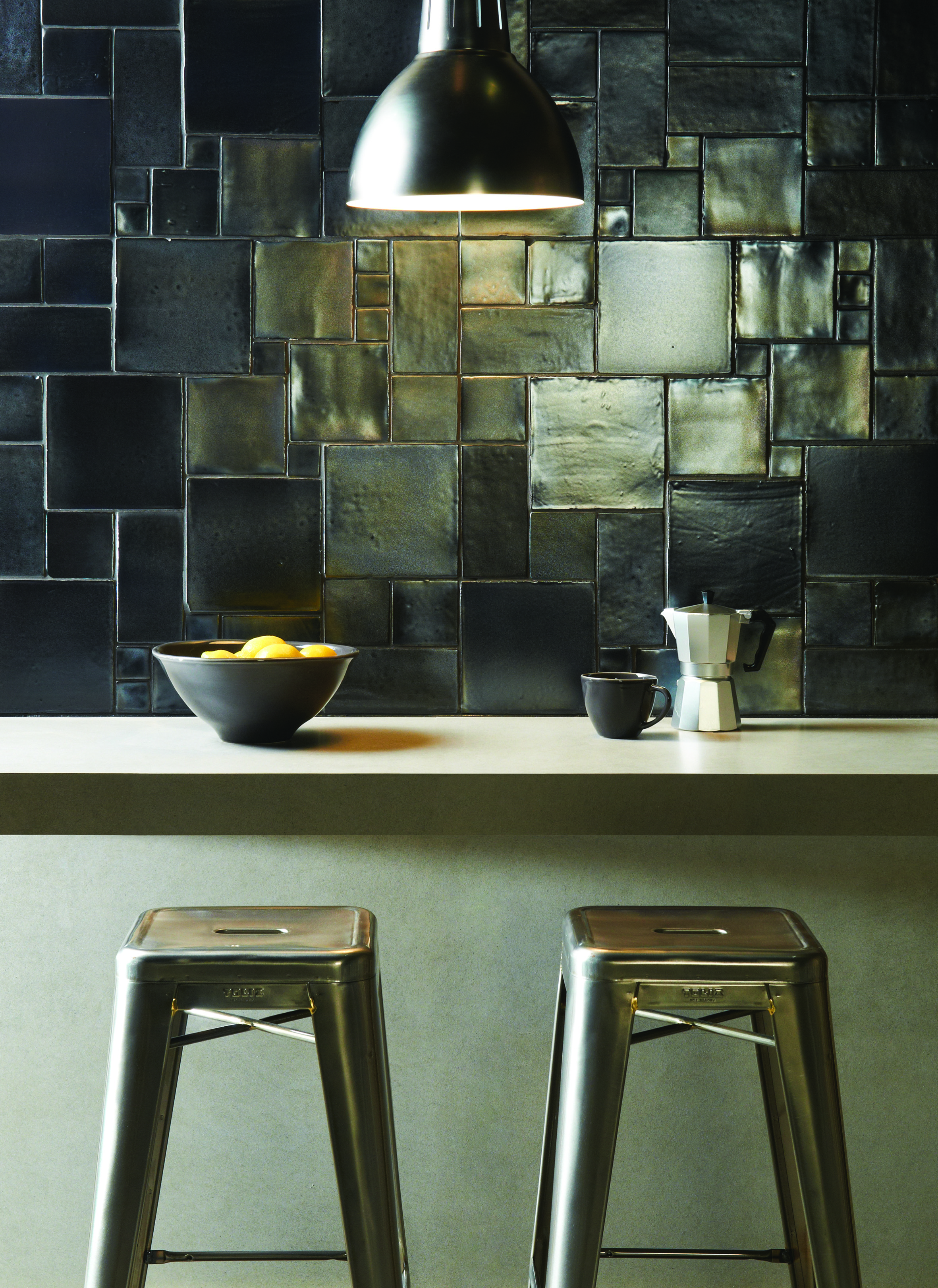
Gallium Mix tiles, £319.95 per square metre, Foundry Metallics range, Residence collection, The Winchester Tile Company
Wall tile trends
Brick-shaped metro tiles have been a huge hit for kitchen and bathroom walls, and our love of the look shows no signs of fading. Their ability to look good in industrial-style and vintage-influenced schemes might have something to do with it, plus they’ll work alongside areas of pattern elsewhere on the wall, or on the floor.
Fish-scale wall tiles are a growing trend, and their scalloped shape suits both kitchen splashbacks and bathroom walls. Curve uppermost or curve down, they make a great feature.
Geometric tiles are a big hit, too – and not just as part of a mosaic design. They’ll complement a clean-lined contemporary kitchen or add a smart feature wall in a bathroom.
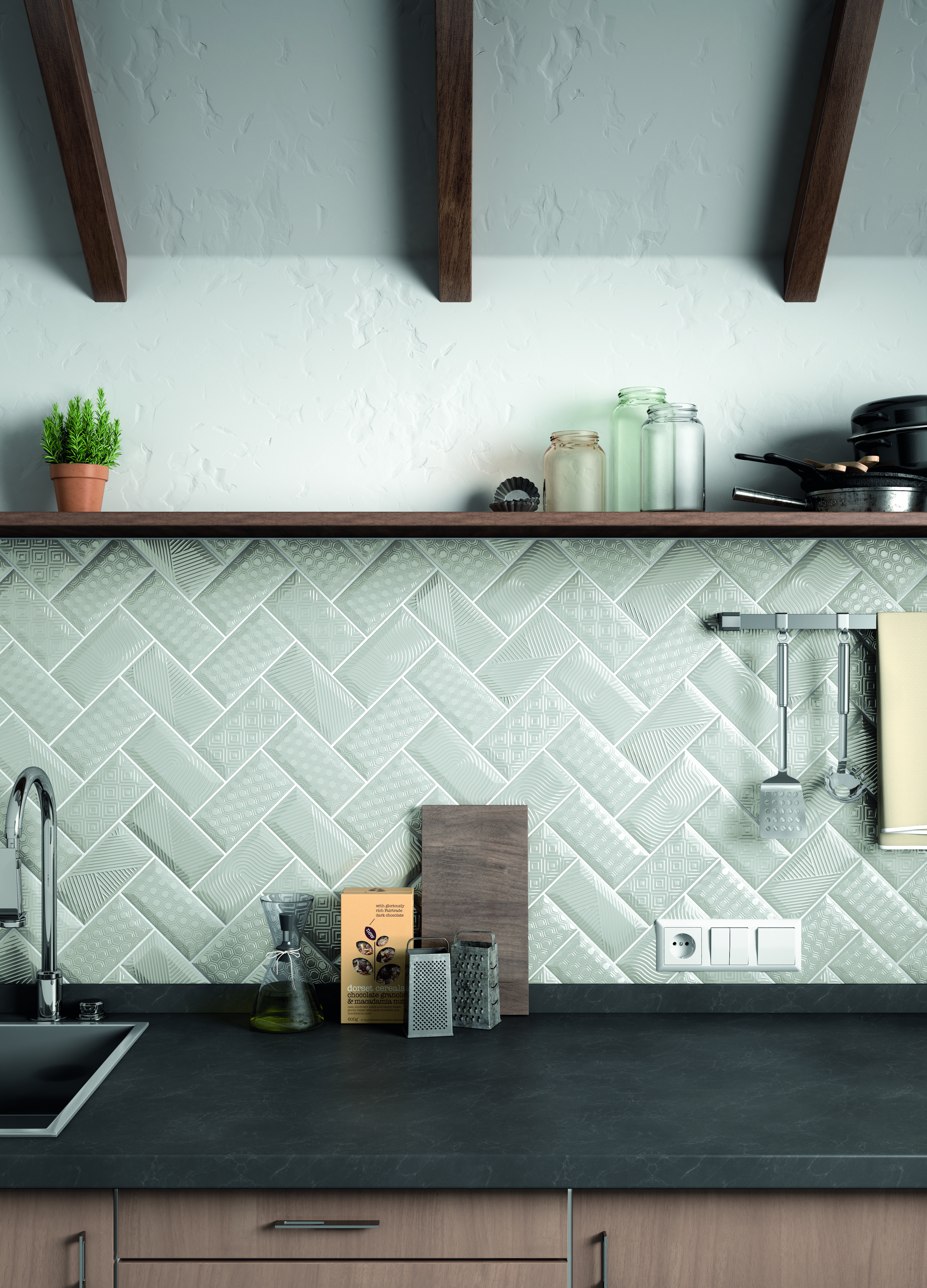
Fitting wall tiles
Tiling a kitchen or bathroom wall is a job you can do yourself, and careful preparation and accuracy can bring brilliant results. More tricky can be cutting the tiles. Ceramic is easier to cut than dense porcelain and natural stone. If you’ve invested in expensive tiles, it is worth calling in a professional to do the job for you.
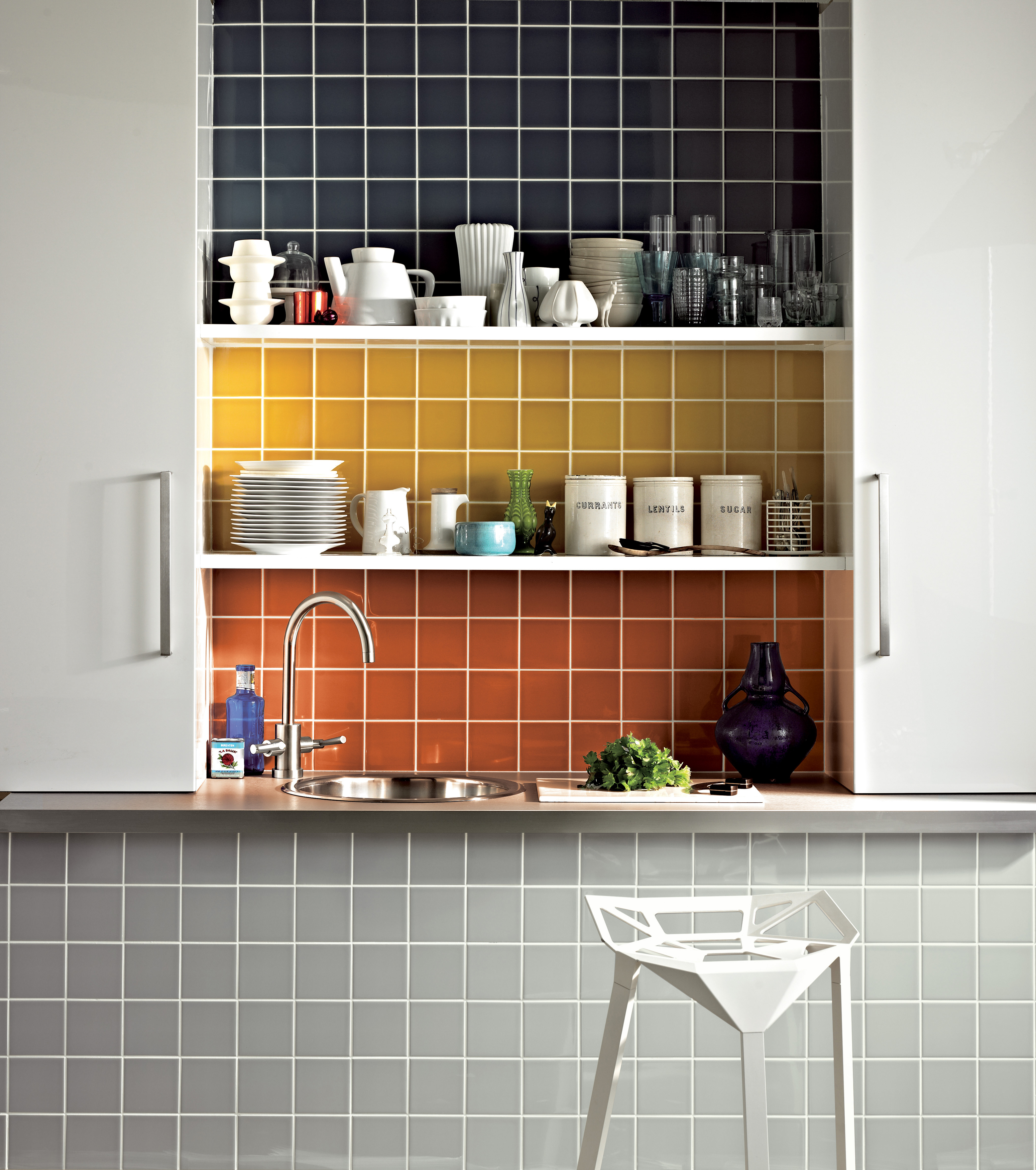
Prismatic tiles, £39.25 per square metre, Johnson Tiles range, Walls and Floors
Maintaining and cleaning wall tiles
Manmade tiles are easy to keep clean and, correctly sealed, natural stone can be cared for easily. It’s vital, though, to use suitable cleaning products for the type of tile. Natural stone needs the appropriate product for the particular type of stone, so always take the advice of the supplier when you’re buying.
Looking for more decorating inspiration?
Join our newsletter
Get small space home decor ideas, celeb inspiration, DIY tips and more, straight to your inbox!

Sarah is a freelance journalist and editor writing for websites, national newspapers, and magazines. She’s spent most of her journalistic career specialising in homes – long enough to see fridges become smart, decorating fashions embrace both minimalism and maximalism, and interiors that blur the indoor/outdoor link become a must-have. She loves testing the latest home appliances, revealing the trends in furnishings and fittings for every room, and investigating the benefits, costs and practicalities of home improvement. It's no big surprise that she likes to put what she writes about into practice, and is a serial house revamper. For Realhomes.com, Sarah reviews coffee machines and vacuum cleaners, taking them through their paces at home to give us an honest, real life review and comparison of every model.
-
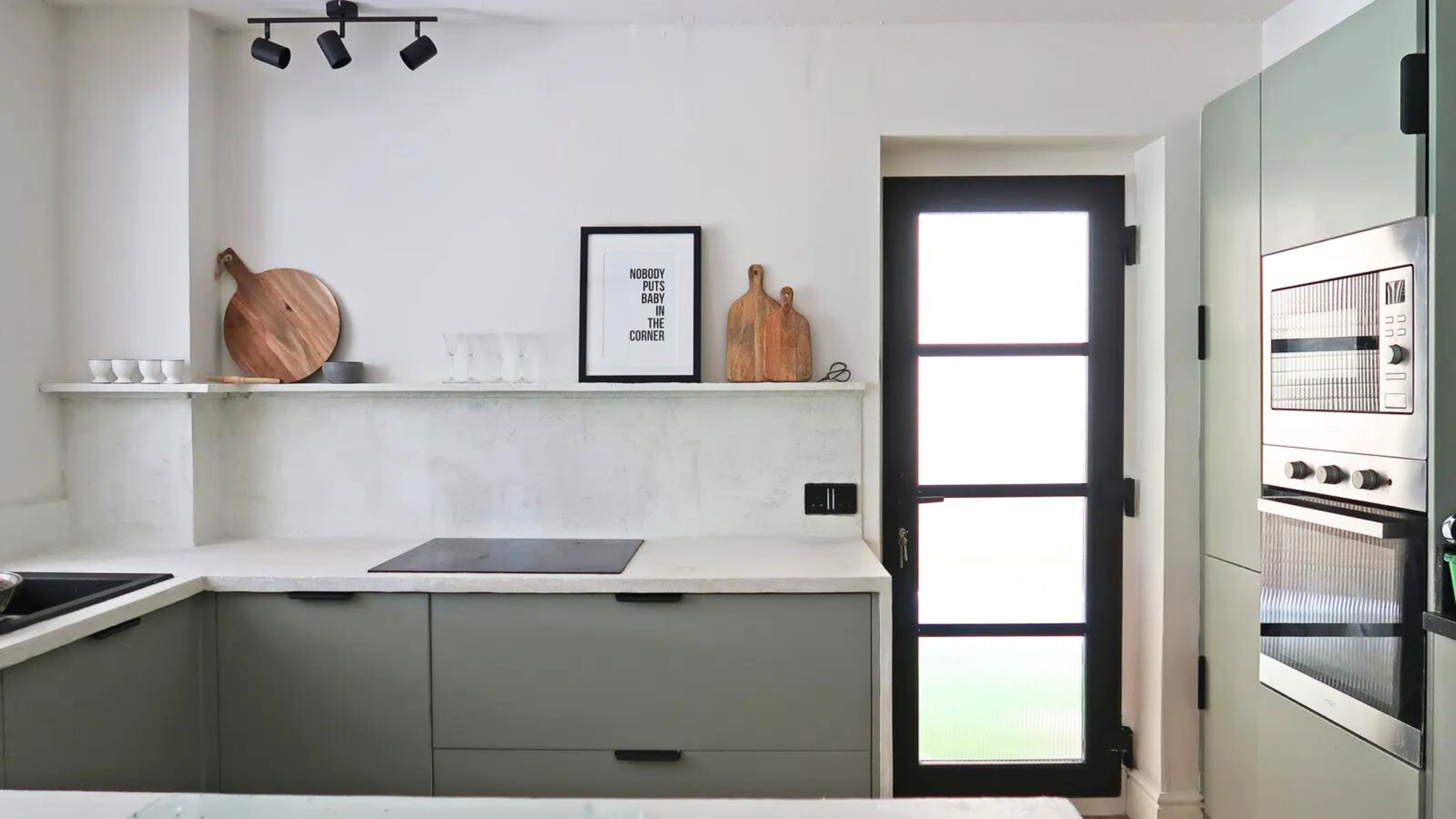 How to microcement over tiles — 5 simple steps for a smooth finish
How to microcement over tiles — 5 simple steps for a smooth finishWant to learn how to microcement over tiles? We've asked interior designers for the key steps they always follow, plus curated highly-rated essentials
By Eve Smallman Published
-
 14 types of floor tiles – beautiful, hard-wearing and on budget
14 types of floor tiles – beautiful, hard-wearing and on budgetAttractive, hard-wearing and easy to maintain, the best types of floor tiles will be a beautiful and practical investment.
By Anna Cottrell Published
-
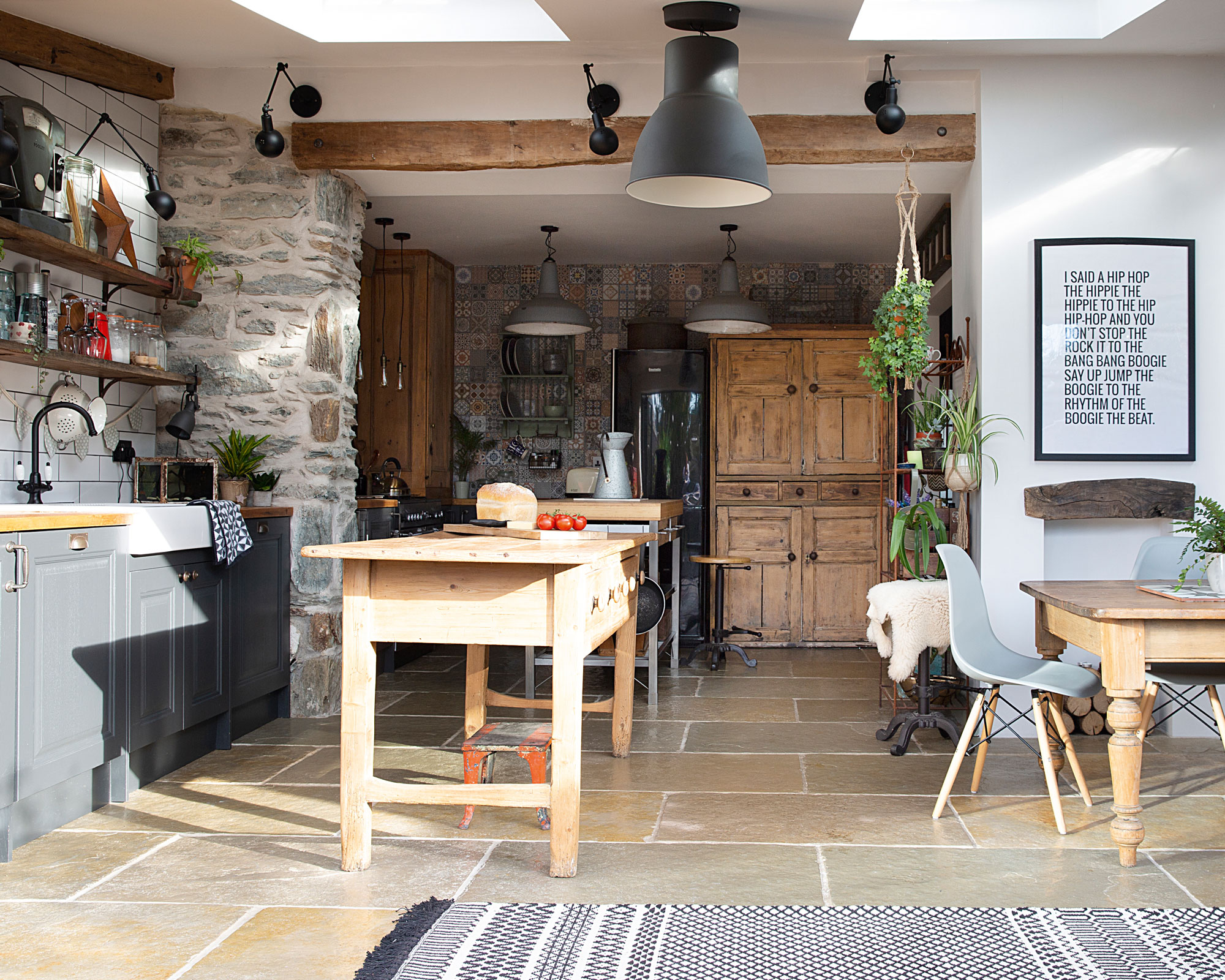 5 of the best types of stone flooring for kitchens, bathrooms and more
5 of the best types of stone flooring for kitchens, bathrooms and moreThe best types of stone flooring can suit all homes, adding value and a sophisticated finish to your space. Each material comes complete with different pros, cons and costs.
By Anna Cottrell Last updated
-
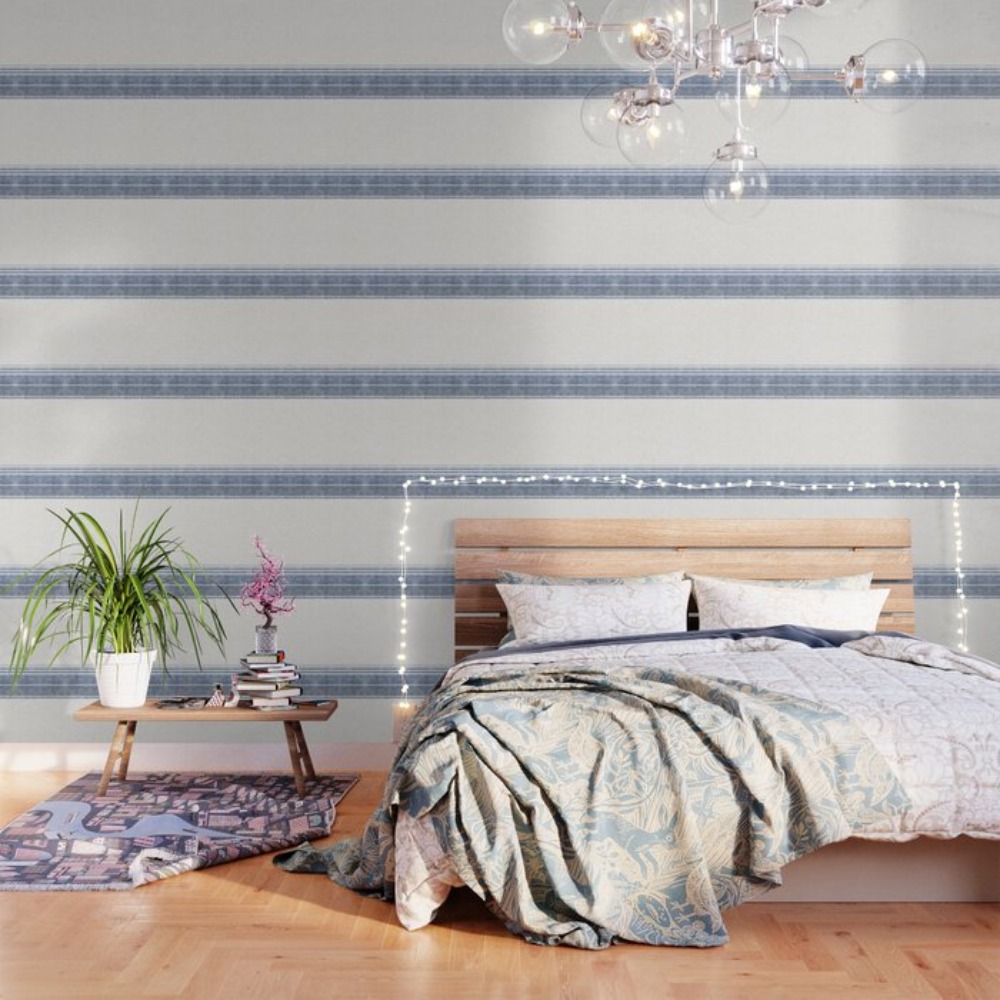 20 bedroom wallpaper ideas that will add personality to your sleeping space
20 bedroom wallpaper ideas that will add personality to your sleeping spaceInspiring bedroom wallpaper ideas will bring print, colorful designs and good vibes to your sleeping space.
By Hebe Hatton Last updated
-
 The most meaningful gift is a personalized painting from Paint Your Life
The most meaningful gift is a personalized painting from Paint Your LifeGift a special someone a customized and handpainted painting done by a talented artist.
By Alex Temblador Last updated
-
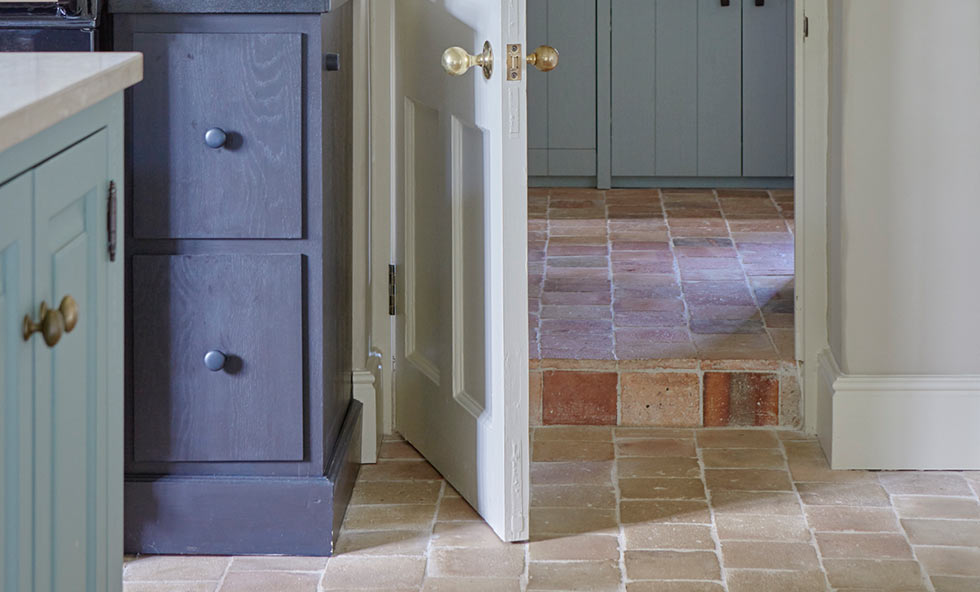 How to clean terracotta floor tiles
How to clean terracotta floor tilesFind out how to clean terracotta floor tiles and restore them to their former glory. Follow DIY expert Helaine Clare’s step-by-step guide
By Helaine Clare Last updated
-
 Natural stone tiles: tips and ideas for using them in your home
Natural stone tiles: tips and ideas for using them in your homeStunning and durable, natural stone tiles are a lustworthy choice for your floor or wall. Sarah Beeny teams up with Topps Tiles to share her top tips on using natural stone in your home
By Sarah Beeny Published
-
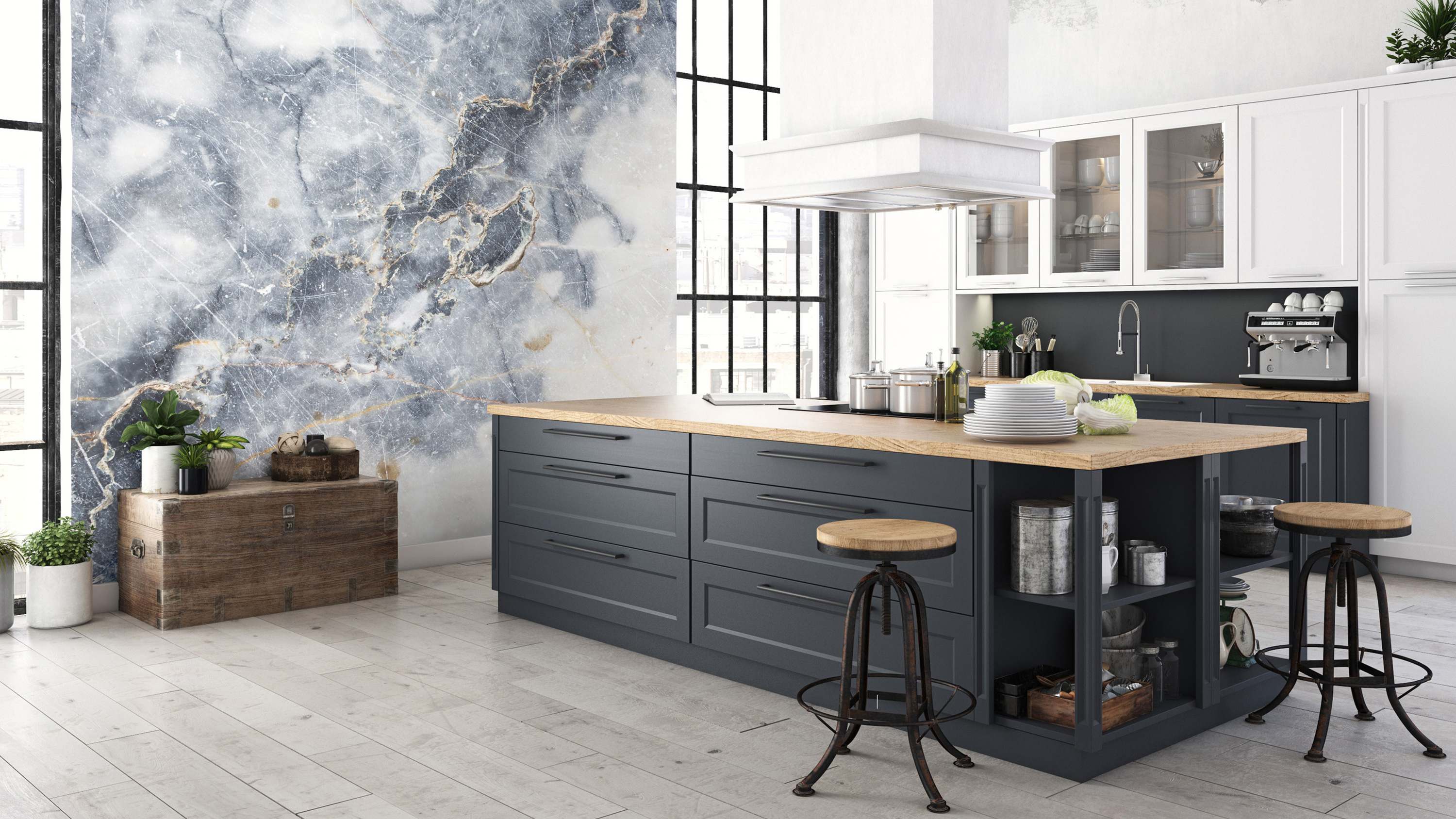 14 best mural design ideas
14 best mural design ideasLove wallpaper but fancy something with more of an impact? Try a mural, they work in any room and can create a stunning focal point
By Sophie Warren-Smith Last updated